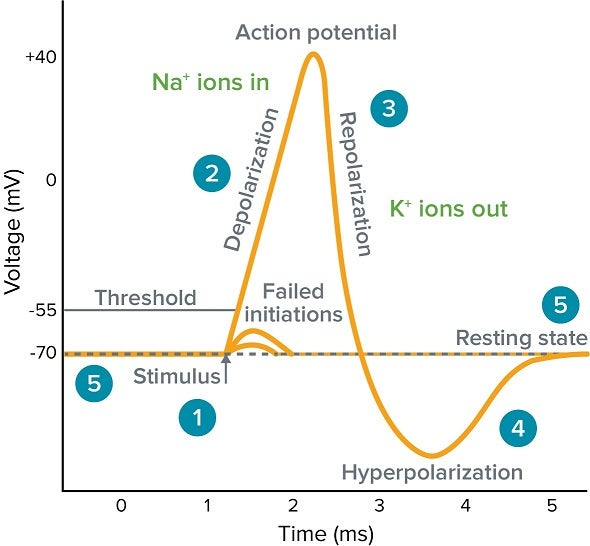An action potential is a particular change in the state of a Neuron that involves a rapid electric charge spike.
This rapid spike is what allows a Neuron to send a signal across its axon to other neurons or cells. It’s essentially a temporary reversal of the neuron’s membrane potential, switching from negative to positive. This rapid change in voltage is caused by the movement of ions, like sodium and potassium, across the neuron’s membrane, aka Ion Channels.
An important note is that due to the All-or-none principle, the “signal strength” of the action potential does not matter at all. Instead “intensity”/“importance” is conveyed by the Firing Rate of the neuron itself.

A key part of Computational Neuroscience involves approximating the firing rate, which is the sum of all action potentials. Because action potentials take a form similar to that of the Dirac Delta Function, unique methods are needed to approximate the firing rate.
They are actually more general than that, and the term is also used for other excitable cells in the body like muscle cells.